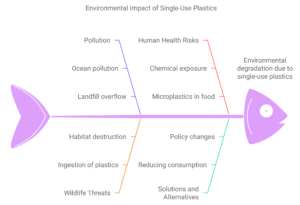Safety Tips to Prevent Winter-Related Workplace Accidents
4 min readA strong safety culture extends to all seasons, even in winter when cold stress is common among outdoor workers.

This time of year, cold stress that can result in hypothermia or frostbite is a hazard of which employers must be aware, particularly if they have outdoor workers. With the right preparation and presence of mind, both employers and employees can prevent these injuries.
One of the most effective prevention techniques is adopting the attitude that safety is an area of responsibility for everyone in the organization – both the employer and workers. Companies must initiate and reinforce safety protocols and clearly spell out safety responsibilities and expectations.
Including your staff in all aspects of your safety plan – from hazard identification to problem solving – not only will encourage a strong safety culture within your organization, it also will allow for an open dialogue that leads to continuous improvement. This includes seasonal safety policies.
Slips, Trips and Falls
The Bureau of Labor Statistics recently announced that slips, trips and falls accounted for 800 workplace fatalities in 2015 at a time when workplace deaths in the U.S. reached a six-year high.
Slips, trips and falls happen year-round, of course, but winter ice and snow create a more hazardous environment that increases the risk of worker injuries.
A proactive safety plan that specifically addresses slips, trips and falls not only enhances worker safety but also minimizes potential costs from workers’ compensation payments, government fines or equipment/facility remediation requirements.
No shortage of information exists on safety measures to reduce slip, trip and fall incidents, and your insurance carrier may have specific suggestions pertaining to your facility.
For employers, an active effort needs to be made to prevent ice build-up on walkways, de-icing walkways and clearing walkways. Parking areas and outside break areas are often the most commonly overlooked.
Snow removal companies often allow snow and other debris to build up in areas which directly are in employees’ pathways or otherwise obstruct a safe pathway.
The parking lot needs to be addressed as many winter falls occur when someone is getting in/out of his/her car or walking toward a cleared sidewalk.
This oversight, or simply the reliance on de-icing efforts alone, creates more potential hazards. In other words, there needs to be eyes on the parking areas, outside break areas and walkways at all times.
Here are six simple tips to avoid slips, trips and falls during the winter season:
- Keep walkways, stairways and other work areas clear.
- Remove hazards, such as water on floors and snow on sidewalks, immediately.
- When walking, look where you are going and have your hands ready to steady yourself should you slip.
- Avoid carrying heavy loads that may compromise your balance.
- Mark hazardous areas. Use temporary signs, cones, barricades or floor stands to warn passing workers.
- Outside, wear footwear with heavy treads for increased traction. Walk along grassy areas if a walkway is covered in ice. Make yourself visible to drivers by wearing a brightly colored jacket or clothes.
Frostbite and Hypothermia
Frostbite and hypothermia are the consequences of cold exposure, and both can have long-lasting effects. If you suspect either condition, call for help.
Know the signs of hypothermia and frostbite:
Hypothermia
- Shivering or shaking
- Lack of coordination
- Drowsiness or confusion
- Slurred speech
Frostbite
- Skin that is very cold and turns numb, hard and pale
- Blisters or swelling
- Joint or muscle stiffness
Keep the affected body part elevated in order to reduce swelling, and move the person to a warm area to prevent further heat loss. Remove all wet clothing and apply a dry, sterile bandage to the affected area or place cotton between any involved fingers or toes. Seek proper medical care as soon as possible.
Add a Layer of Protection to Your Bottom Line
Even the most well-designed safety programs ultimately will be ineffective without the active participation and input of employees. In fact, a 2016 Gallup study revealed that employers with high levels of employee engagement had 70 percent fewer safety incidents than those with lower levels of engagement.
General guidelines include these standard safety precautions:
- Identify potential slip, trip and fall hazards in your workplace: review incident records, inspect locations and consider the impact of changing environmental conditions.
- Evaluate the potential risk of each hazard: number of employees who could be affected, the potential frequency of risk and the potential impact of the surrounding area or equipment.
- Determine controls that can be instituted to reduce each hazard: relocating or removing dangerous environmental factors, limiting accessibility to higher-risk areas and providing appropriate footwear or personal protective equipment.
- Regularly review the work environment: maintain regular housekeeping, ensure good lighting and keep equipment in proper working condition.
- Maintain records of all incidents and continually review and improve the work environment and safety initiatives: make employees feel “safe” to report safety concerns and make changes when necessary.
Creating an environment where your staff is comfortable enough to share responsibility of your safety plan may take time. The most vital component to building that trust is communication.
Effective communication does not rely on a one-directional flow from management to associates, but should instead actively seek upward feedback and input from employees to better understand and improve safety and health programs.
When leaders take the time to listen to their workers’ perspectives and insights, it promotes an environment of respect and upholds safety as a fundamental organizational value.





1 thought on “Safety Tips to Prevent Winter-Related Workplace Accidents”